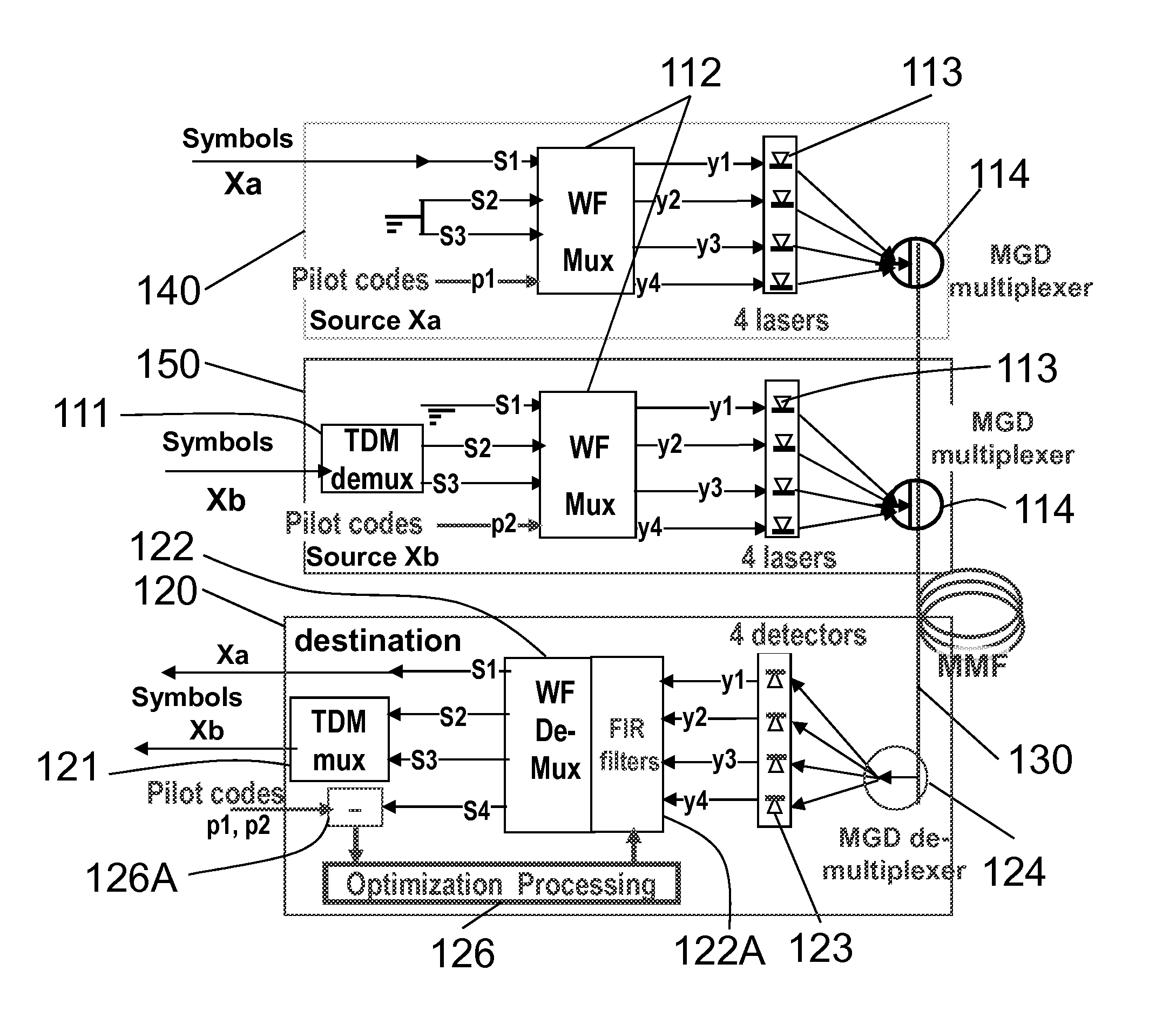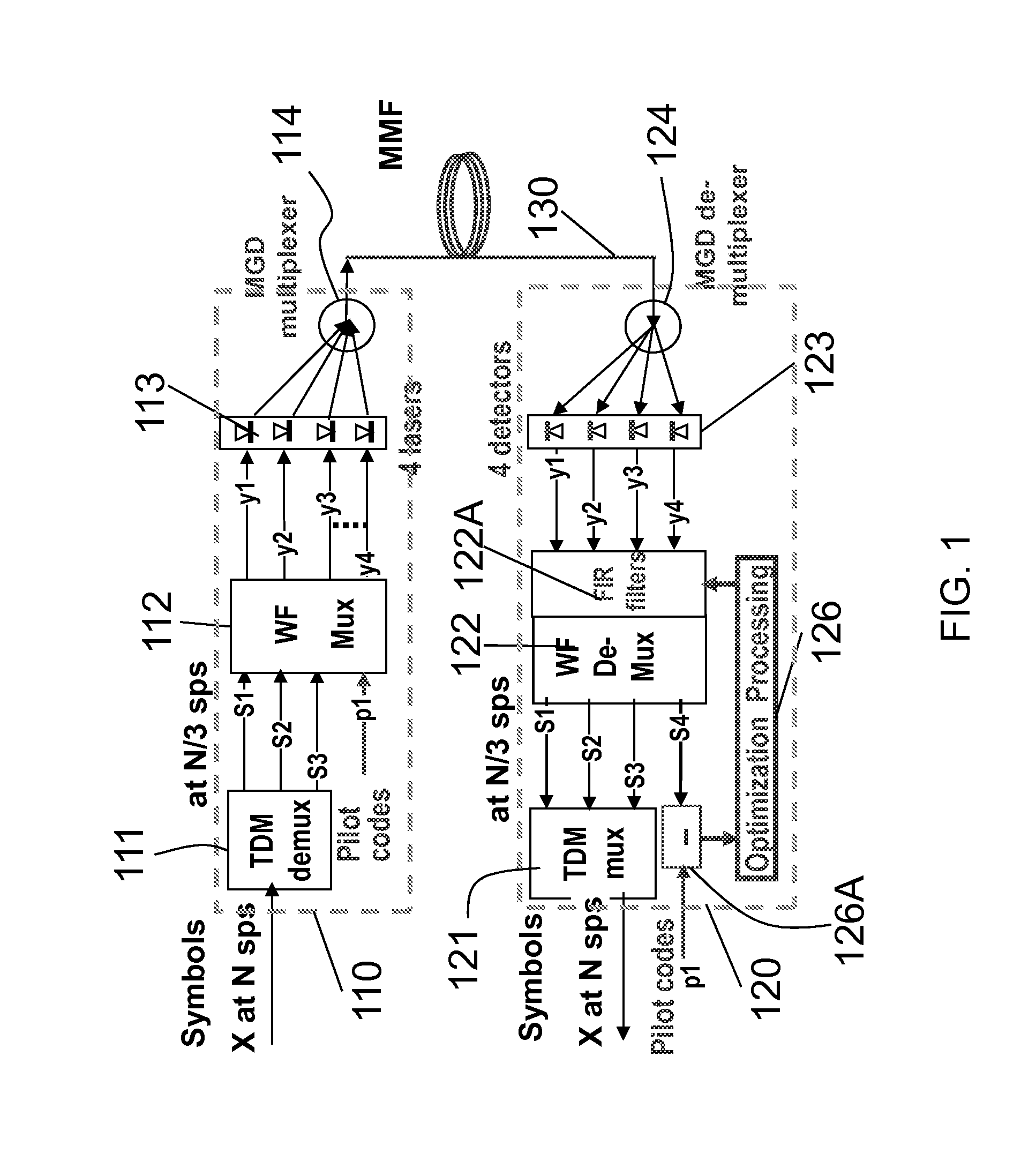High speed multi-mode fiber transmissions via orthogonal wavefronts
a multi-mode fiber and orthogonal wavefront technology, applied in the field of optical fiber link throughput and reliability improvement, can solve the problems of increasing laser power, inter-symbol interference (isi), and not being able to guarantee better snr, so as to achieve high capacity and reliability, and leverage the distance capabilities of fiber. , the effect of less expensiv
- Summary
- Abstract
- Description
- Claims
- Application Information
AI Technical Summary
Benefits of technology
Problems solved by technology
Method used
Image
Examples
Embodiment Construction
[0067]The current invention provides a system for coherently bonding multiple optical fiber communication channels by generating artificial wavefronts in multiple optical paths that exhibit mutual spatial orthogonality. Multiple independent signal streams are “structured” over a group of different propagation paths coherently organized by wavefront (WF) multiplexing (muxing) and de-multiplexing (demuxing) techniques. In the detailed description that follows, like element numerals are used to indicate like elements appearing in one or more of the figures.
[0068]FIG. 1 illustrates a design concept featuring a multiple-mode-fiber (MMF) with 300% improved transmission capacity via 4 separated mode-groups (MGs) organized by a WF muxing and demuxing processor. It is only for illustrations of a point-to-point design concept and is not an implementation design.
[0069]Each MG features a vertical-cavity surface-emitting laser (VCSEL) 113 in transmission site and associated detector 123 on recei...
PUM
 Login to View More
Login to View More Abstract
Description
Claims
Application Information
 Login to View More
Login to View More - R&D
- Intellectual Property
- Life Sciences
- Materials
- Tech Scout
- Unparalleled Data Quality
- Higher Quality Content
- 60% Fewer Hallucinations
Browse by: Latest US Patents, China's latest patents, Technical Efficacy Thesaurus, Application Domain, Technology Topic, Popular Technical Reports.
© 2025 PatSnap. All rights reserved.Legal|Privacy policy|Modern Slavery Act Transparency Statement|Sitemap|About US| Contact US: help@patsnap.com



